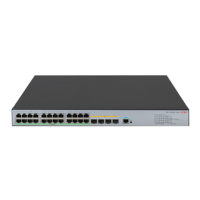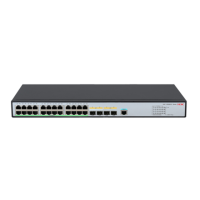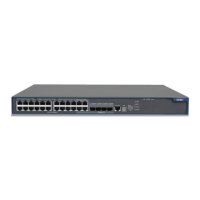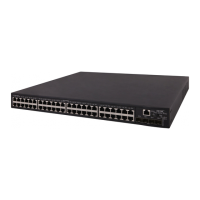7
For a remote MAC address, this field displays the tunnel interface name.
Link ID Link ID that uniquely identifies an AC or a VXLAN tunnel on a VSI.
State
Entry state:
• Dynamic—Local- or remote-MAC entry dynamically learned in the data plane.
• Static—Static local- or remote-MAC entry.
• EVPN—Remote-MAC entry advertised through BGP EVPN.
• OpenFlow—Remote-MAC entry issued by a remote controller through
OpenFlow.
• OVSDB—Remote-MAC entry issued by a remote controller through OVSDB.
• Multiport—Local or remote multiport unicast MAC entry.
• Multicast—Local or remote multicast MAC entry.
Aging
Entry aging state:
• Aging.
• NotAging.
Related commands
reset l2vpn mac-address
display l2vpn service-instance
Use display l2vpn service-instance to display information about Ethernet service
instances.
Syntax
display l2vpn service-instance [ interface interface-type
interface-number [ service-instance instance-id ] ] [ verbose ]
Views
Any view
Predefined user roles
network-admin
network-operator
Parameters
interface interface-type interface-number: Specifies a Layer 2 Ethernet interface or
Layer 2 aggregate interface by its interface type and number. If you do not specify an interface, this
command displays Ethernet service instance information for all Layer 2 Ethernet interfaces and
Layer 2 aggregate interfaces.
service-instance instance-id: Specifies an Ethernet service instance by its ID in the range
of 1 to 4096. If you do not specify an Ethernet service instance, this command displays information
about all Ethernet service instances on the specified Layer 2 Ethernet interface or Layer 2 aggregate
interface.
verbose: Displays detailed information about Ethernet service instances. If you do not specify this
keyword, the command displays brief information about Ethernet service instances.
Examples
# Display brief information about all Ethernet service instances.
<Sysname> display l2vpn service-instance
Total number of service-instances: 4, 4 up, 0 down

